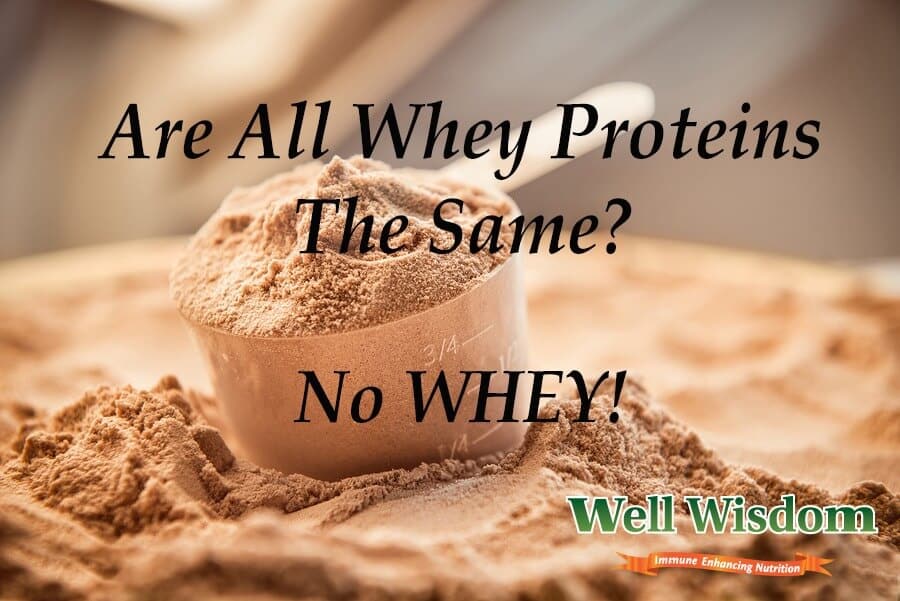
The word “whey protein” is usually synonymous with the massive tubs of protein powder that bodybuilders pound two or three times a day. These tubs are sold in bulk, with protein powder also manufactured in huge quantities at a time. For those who are trying to “eat clean” and reduce artificial ingredients in their diet, these powders are best avoided due to their high chemical, sugar, and flavoring content.
But here’s the truth: not all protein powder is made the same. In fact, not even all WHEY protein powder is the same. The type of protein powder you find in bulk is very different from grass-fed protein powder.
What’s the difference? Below, you’ll find out everything you need to know about how protein powder is made so you can see how grass-fed protein powder is not the same as the sugary, artificial powders manufactured and sold in bulk.
How Whey Protein is Made
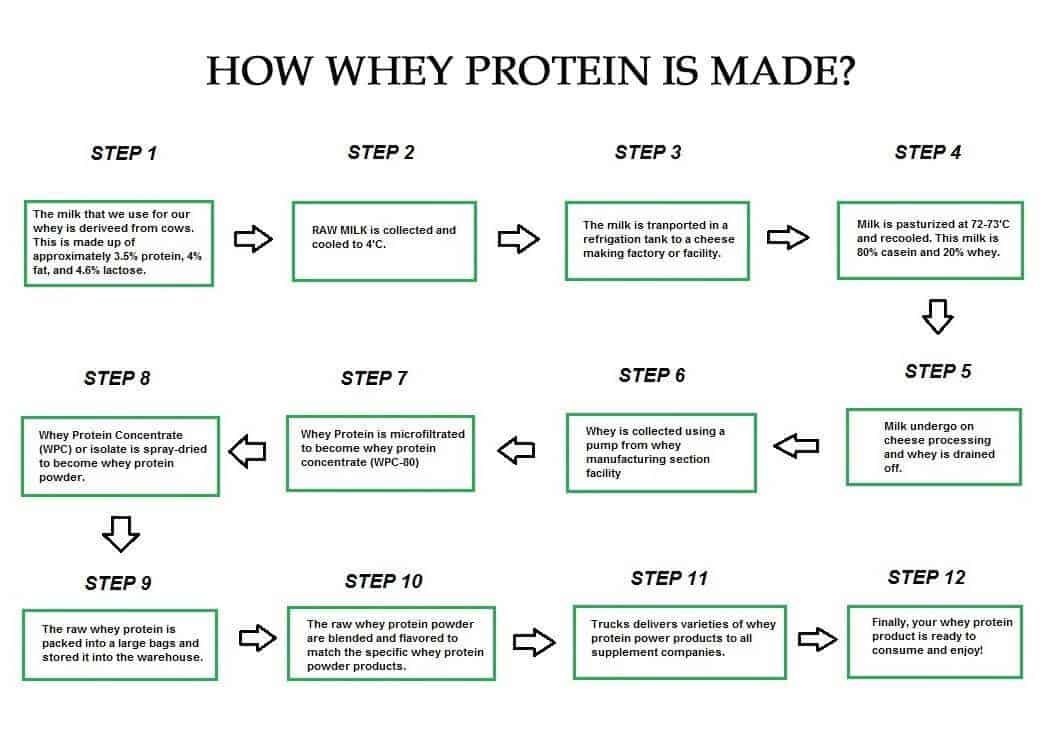
Whey is a natural ingredient found in milk. When milk is made into cheese, there is a clear, watery liquid that separates from the hard cheese. This is whey, and it contains a lot of the protein that is found naturally in milk. The cheese contains mostly casein protein, while the whey comes away with most of the whey protein.
To make whey protein, the whey is separated from the cheese and put through a drying process. This turns the liquid into a solid, which is then ground into powder after all the water has been removed. All whey protein powder is, at its core, the powdered, dried whey from the cheese-making process.
But dried why on its own doesn’t taste too great. It has kind of a thin, cheesy flavor that wouldn’t be very delicious if consumed alone. Thus, manufacturers of protein powder like to add sugar, flavorings, and other ingredients to make it taste better. Sometimes, they add other ingredients to boost the nutritional value of the whey protein. You end up with a higher BCAA, glutamine, or CLA content thanks to those extra ingredients.
Here’s the kicker: not all the added ingredients are good for you. A lot of them are artificial, with chemicals that simulate delicious flavors. Your body isn’t always able to process those chemicals, which can place a strain on your liver and kidneys. The artificial sugars can also affect your blood sugar levels, leading to higher risk of insulin resistance. Even if the protein powders are intended to be “zero carb”, they still contain some sort of sweetener in order to add flavor to the powder and cover the natural whey taste.
How Grass Fed Whey Protein is Made
There are a few differences in the entire whey protein-making process when it comes to how grass fed whey is made. Grass-fed whey is usually intended to be as “clean” and organic as possible, so it’s almost always made WITHOUT the variety of synthetic ingredients: sugars, sweeteners, flavorings, etc. There are no preservatives or fillers in grass-fed whey protein, and there’s nothing to strain your liver or raise your blood sugar levels.
But let’s drill down a bit further. The differences are visible from the beginning, thanks largely to the way whey protein is processed.
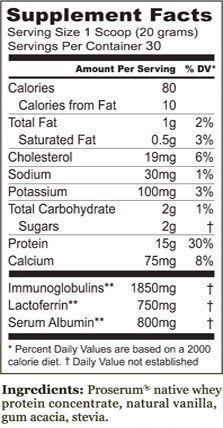
Grass-fed whey protein is often cold-processed, meaning it’s dried at low temperatures. This preserves a lot of the more delicate nutrients that are damaged by heat, so the antioxidants, enzymes, and anti-inflammatory immune factors remain intact. The cold-processing also produces a slightly higher amino acid content, along with alkaline minerals, metabolism-boosting peptides, and, best of all, a more bioavailable (easier to absorb and digest) protein powder.
The lack of processing in grass-fed whey protein means that it’s as natural as possible. The average human has no problem breaking down, absorbing, and utilizing milk. By keeping the whey protein as close to its original chemical structure as possible, it makes the protein easier for your body to use. The result: more “bang for your buck” in terms of protein uptake.
But here’s another benefit of grass-fed whey protein: there are no hormones, antibiotics, or pesticides in the protein. While many leading brands of protein powder contain cow’s milk that contains potentially harmful ingredients (albeit in VERY small quantities), grass-fed milk is 100% free of all artificial pesticides, insecticides, antibiotics, and hormones. The result is a much ”cleaner” product that is safer for human consumption.
How Grass-Fed Whey Benefits You
Protein comes with a lot of amazing benefits—from muscle-building to metabolism-boosting to disease fighting. But grass-fed whey comes with even more benefits that can help to make you healthier:
- Better Insulin Control – The lack of artificial sugars in grass-fed whey protein means your blood sugar levels will remain steady after drinking your protein powder. The more consistently low your blood sugar, the less risk of insulin resistance (which can lead to diabetes).
- Better Digestion – Whey protein can upset your stomach, especially with all those added artificial ingredients. But grass-fed whey protein is like drinking a glass of milk. It’s as natural as it gets, meaning it’s less likely to cause indigestion. Best of all, it’s more easily broken down and absorbed into your body!
- Better Immunity – The cold-processing of grass-fed whey protein means that there are more immune-boosting factors, enzymes, and antioxidants in every sip of your protein shake.
- Better Overall Nutrition – Compare the nutritional profile of grass-fed whey protein versus regular whey protein, and you’ll find that grass-fed whey has more vitamins, minerals, peptides, enzymes, and antioxidants, hands down!
If your goal is to be as healthy as possible, grass-fed whey protein is the smarter choice. It’s cleaner, more natural, and will help you to avoid artificial chemicals and sweeteners. It will ensure that your consumption of protein is as effective and beneficial as it gets!
- The Best Protein Shakes for Diabetics - November 30, 2022
- Whey Protein vs Pea Protein: Which is Better? - September 27, 2022
- Gluten Free Protein Powder - August 19, 2019

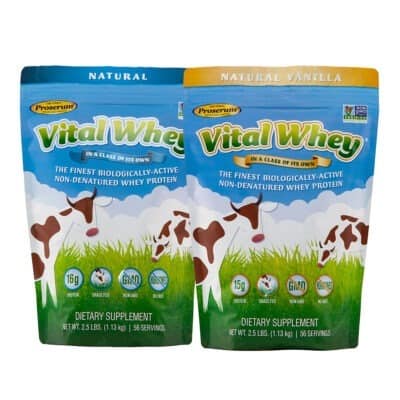
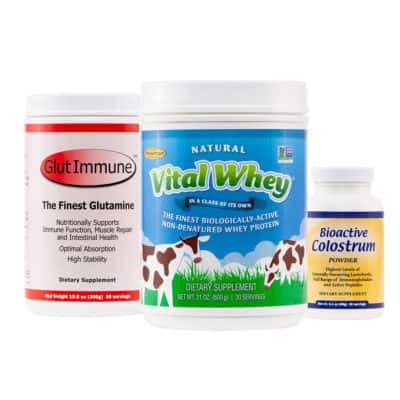
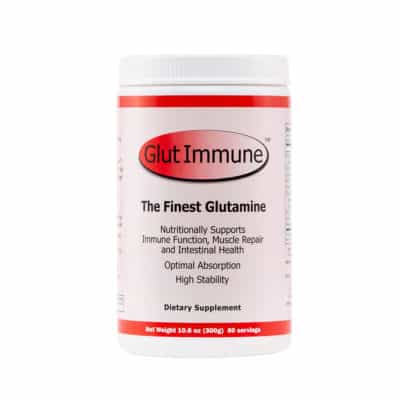
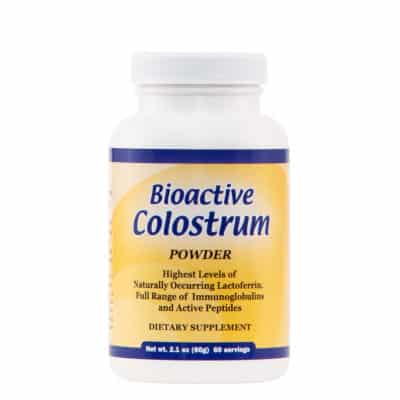
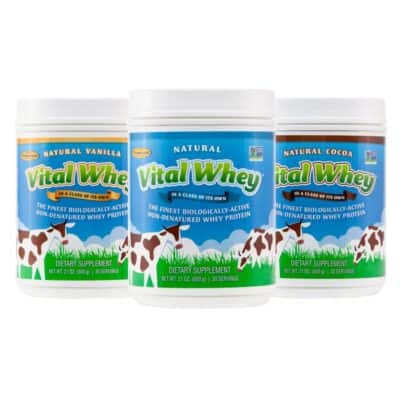
I was treated for fibromyalgia for twenty years. I discovered whey protein. And all pain gone. I am trying to find the best whey protein. I have been reading for months and need some help with the best product.
If you can please advise me.
Thanks